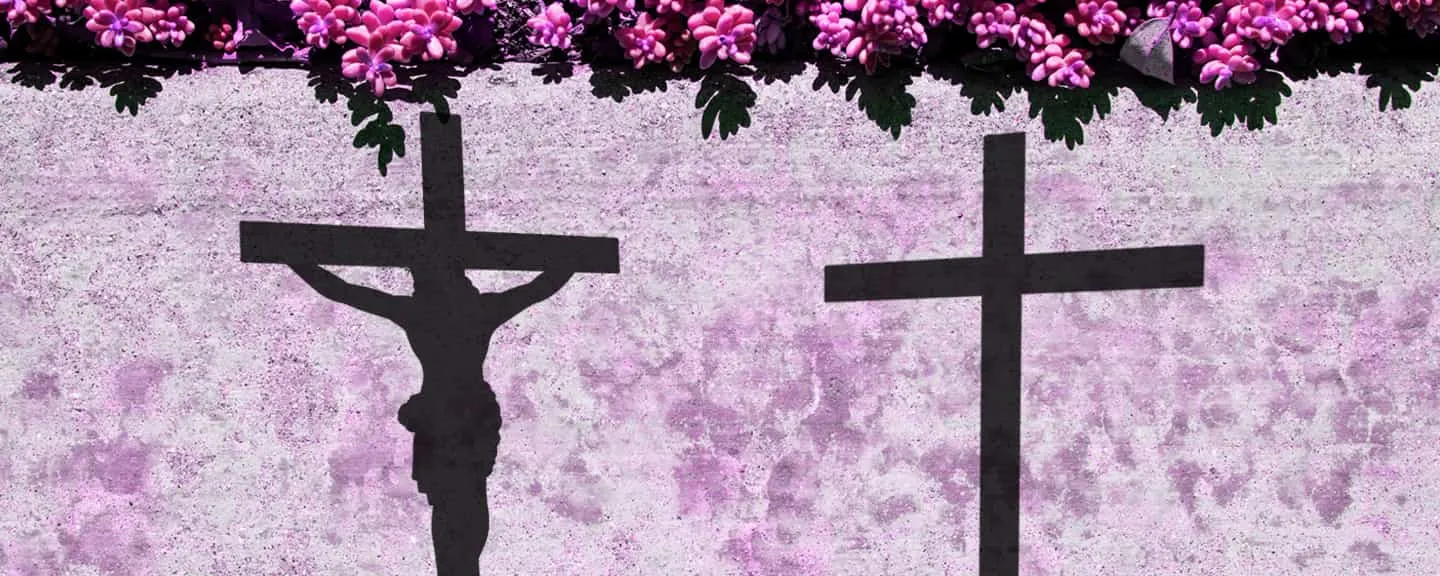- Home
- >
- APU Articles
- >
- News Article
What Two Crosses Mean for Believers in Today’s Uncertain World
April 08, 2020 | Written By Coba Canales, Ed.D.

In fact, the symbol of the cross has become so commonplace and cultural that I wonder how often we actually consider the depth of meaning the cross carries? And how often do we pause to consider the relationship between depictions of Christ’s cross spanning the various streams of Christian faith?
Vision of Two Crosses
In the incarnational tradition, the cross is presented with the crucified Christ nailed to it, wearing the crown of thorns, emaciated, bleeding, naked, and alone. The evangelical tradition presents a wooden cross—no blood, no Jesus, often without nails—just the cross. Have you ever considered the theological implications of these distinct images of the cross? One might associate the incarnational depiction of the cross with Good Friday while the evangelical cross reflects Resurrection Sunday. Some might question whether we should give preference to the incarnational or evangelical depiction of the cross. Yet in taking a deeper look at the significance of each portrayal, we see that both teach us important truths.
A God Who Suffers
The incarnational imagery of the cross connects us to the suffering of God. Evangelicals sometimes struggle with this notion because we tend to build our theological framework around a victorious, all-powerful God. In fact, throughout history, we’ve tried to minimize the reality of Christ, the Son of God, being beaten, rejected, and crucified. Yet in doing that, we can miss a significant characteristic that is difficult to comprehend but beautiful once grasped—that the crucifixion itself communicates something about God’s nature which allows us to find suffering centrally planted in the story and character of God.
An incarnational depiction of the cross points us to a God who understands suffering (Hebrews 4:15) and that, in Christ, we are able to approach a God who knows sickness, suffering, trial, persecution, rejection, and death. This image communicates a God with pathos who can grieve with, feel with, and be compassionate toward those who suffer. In Show Me the Way, Henri Nouwen reflected on the relationship between these two realities:
“The core message of Jesus is that real joy and peace can never be reached while bypassing suffering and death, but only by going right through them… We can deny the reality of life, or we can face it. When we face it not in despair, but with the eyes of Jesus, we discover that where we least expect it, something is hidden that holds a promise stronger than death itself. Jesus lived his life with the trust that God’s love is stronger than death and that death [and I will add sickness, misfortune, pandemic, and catastrophe] therefore does not have the last word. He invites us to face the painful reality of our existence with the same trust. This is what Lent is all about.”
Victory in the Resurrection
As someone who has grown up in the tradition of the evangelical cross, my faith has been shaped by the belief that God is good, is always at work, and gives strength to those who suffer. In fact, to tap into the Hispanic Pentecostal theology of my upbringing, we were taught that “Dios es Bueno—Todo el tiempo! Todo el tiempo—Dios es Bueno! Y a Su Nombre—Gloria! Y a Su pueblo—En victoria!” Translated: God is Good—All the time! And all the time—God is Good! And to His Name—Be the Glory! And for His people—To live in victory!
The evangelical tradition celebrates the glorious and powerful resurrection of Jesus; death does not win and the grave is merely the first chapter of the miracle of resurrection and eternal life (1 Corinthians 15:55). This blessed hope gives the believer existential confidence and provides incomprehensible peace in the midst of situations that are otherwise chaotic (Philippians 4:6). The empty cross reminds Christians that suffering, crucifixion, and the grave do not have the final word. We’re reminded that the suffering Christ indeed rose again on the third day and is now seated at the right hand of the heavenly throne (Revelation 5).
What Both Crosses Mean for Us Today
Examining the incarnational and evangelical crosses together teaches us something profound in this season of pandemic, world crisis, uncertainty, fear, sickness, and even death. Both crosses illustrate theological truths for us to embrace. God knows suffering very well—even to the point of throwing Himself into the pit of our suffering so that through His courageous and sacrificial offering we might find healing (Isaiah 53:5). And the empty cross, planted there on a hill, points to One who conquered sin and death and invites others to participate in Resurrection life.
As we enter into Holy Week and observe the wonderful traditions that are present in the milieu of Christian expressions, I invite you to keep both crosses in mind and reflect on the following questions over the course of the week:
- Which image of the cross are you typically drawn toward and why?
- Do you have difficulty reconciling your understanding of God with human suffering? If yes, why might that be?
- Take a moment to visualize the suffering Christ. What might God be speaking to you about the way He views human suffering?
- Are you personally experiencing pain, suffering, or loss? Invite Jesus to enter into your suffering with you and walk alongside you through this season.
- Are you in need of the hope of resurrection? How might the image and truth of the empty cross remind you of God’s promises?